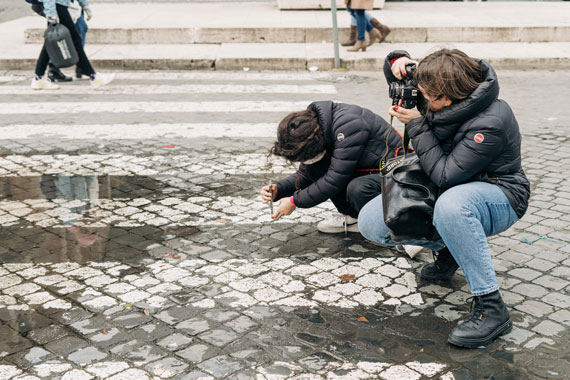Packing the right lens is arguably as crucial as the camera settings you select — especially when it comes to street photography. Why? Each and every lens features a unique focal length or range (measured in mm). A setting that alters how much or little real-world detail ends up in the camera frame. Struggling to choose the right one? In this YouTube tutorial, Sean Tucker shares his favorite focal lengths and lenses for hitting the streets.
A higher mm focal length offers a little more zoom, allowing you to photograph far-off people and events surreptitiously. Yet, it may cut down the amount of surrounding detail that ends up in the frame. Whereas a lower mm focal length will capture details closer to how they appear to the human eye.
When it comes to photographing within a short range, wide-angle, stock, and mid-telephoto lenses are the top choices. Falling between the median 24mm to 85mm focal range, they’re ideal for capturing portraits, scenes, and nearby architecture.
Mid-Telephoto – 85mm
Most famously used by Ernst Haas and Saul Leiter, the 85mm focal length is able to isolate a far-off subject. Hence why it and lenses of this focal length are a top choice for street portrait photographers, including Sean.
In fact, it was his first setup:
I went in to buy my first DSLR… a Canon 350D.. unfortunately, the camera store only had the body’s in stock… but the helpful guy at the store said, ‘don’t worry,’ and… he picked off the shelf a second-hand Canon 50mm f/1.4… as most of you will know, when you team a 50mm lens with a camera with and APS sensor… you get a roughly 85mm focal length equivalent.
Stock – 50mm
Often featured on stock lenses, the 50mm focal range is also a common choice for street photographers. Mainly because the lower mm you go on the focal length range, the more closely the images you take resemble reality.
Sean first experimented with 50mm on his new Canon 5D Mark II. The preferred focal length of Henri Cartier-Bresson, it allowed Sean to include more context in his images. Yes, such as nearby architecture, furniture, vehicles, construction, or other objects.

Photo captured by Gabriella Clare Marino
Wide-Angle – 35mm
Similar to the human eye, wide-angle lenses capture a wider angle of your frame — from 50° up to around 180°. In Sean’s case, his first wide-angle experience was with the Fuji X100. Featuring a 23mm lens and APS sensor, it gave him a roughly 35mm focal length.
When using it, he started to focus more on capturing scenes, including considering light, shadow, and space. Another buy was the Ricoh GR II featuring a 28mm focal length. A setting that Sean felt was the edge of his comfort zone. Offering a wider 75° angle frame, it can transport the viewer almost very uncomfortably into the scene.
Sean’s Advice
Sean has played around with a number of settings and lenses, allowing him to test what works for him. When choosing a focal length or lens, his advice is to go for one that fits your preferences. If you want to isolate your subject, a higher mm focal length is best. In contrast, the more surrounding details you wish to bring into the frame, the lower you should go.
- - - - - - - - - - - - - - - - - - - - - - - - - - - - - - - - - - - - - - - - - - - - - - - - - - - - - - - - - - - - - - - - - - - - - - - - - -
Did you appreciate this newsletter? Please help us keep it going by Joining Our Patreon Supporters
What are your thoughts on this article? Join the discussion on our Facebook Page
PictureCorrect subscribers can also learn more today with our #1 bestseller: The Photography Tutorial eBook
- - - - - - - - - - - - - - - - - - - - - - - - - - - - - - - - - - - - - - - - - - - - - - - - - - - - - - - - - - - - - - - - - - - - - - - - - -
The post Best Lens Focal Lengths for Street Photography appeared first in the Photography Tips category on PictureCorrect.
from PictureCorrect https://ift.tt/Nh7YIvV
via IFTTT






0 kommenttia:
Lähetä kommentti